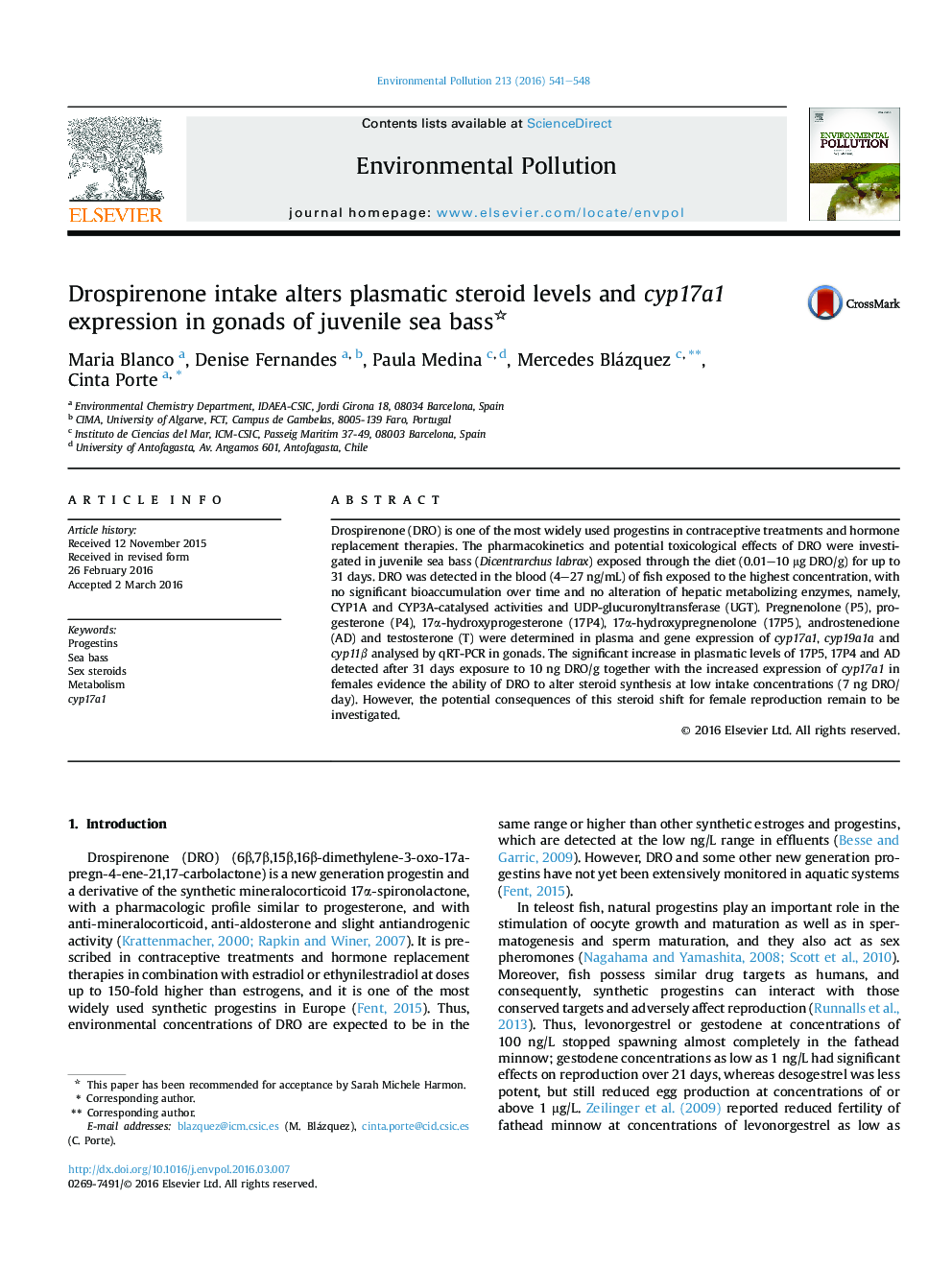| Article ID | Journal | Published Year | Pages | File Type |
|---|---|---|---|---|
| 6314938 | Environmental Pollution | 2016 | 8 Pages |
Abstract
Drospirenone (DRO) is one of the most widely used progestins in contraceptive treatments and hormone replacement therapies. The pharmacokinetics and potential toxicological effects of DRO were investigated in juvenile sea bass (Dicentrarchus labrax) exposed through the diet (0.01-10 μg DRO/g) for up to 31 days. DRO was detected in the blood (4-27 ng/mL) of fish exposed to the highest concentration, with no significant bioaccumulation over time and no alteration of hepatic metabolizing enzymes, namely, CYP1A and CYP3A-catalysed activities and UDP-glucuronyltransferase (UGT). Pregnenolone (P5), progesterone (P4), 17α-hydroxyprogesterone (17P4), 17α-hydroxypregnenolone (17P5), androstenedione (AD) and testosterone (T) were determined in plasma and gene expression of cyp17a1, cyp19a1a and cyp11β analysed by qRT-PCR in gonads. The significant increase in plasmatic levels of 17P5, 17P4 and AD detected after 31 days exposure to 10 ng DRO/g together with the increased expression of cyp17a1 in females evidence the ability of DRO to alter steroid synthesis at low intake concentrations (7 ng DRO/day). However, the potential consequences of this steroid shift for female reproduction remain to be investigated.
Related Topics
Life Sciences
Environmental Science
Environmental Chemistry
Authors
Maria Blanco, Denise Fernandes, Paula Medina, Mercedes Blázquez, Cinta Porte,
